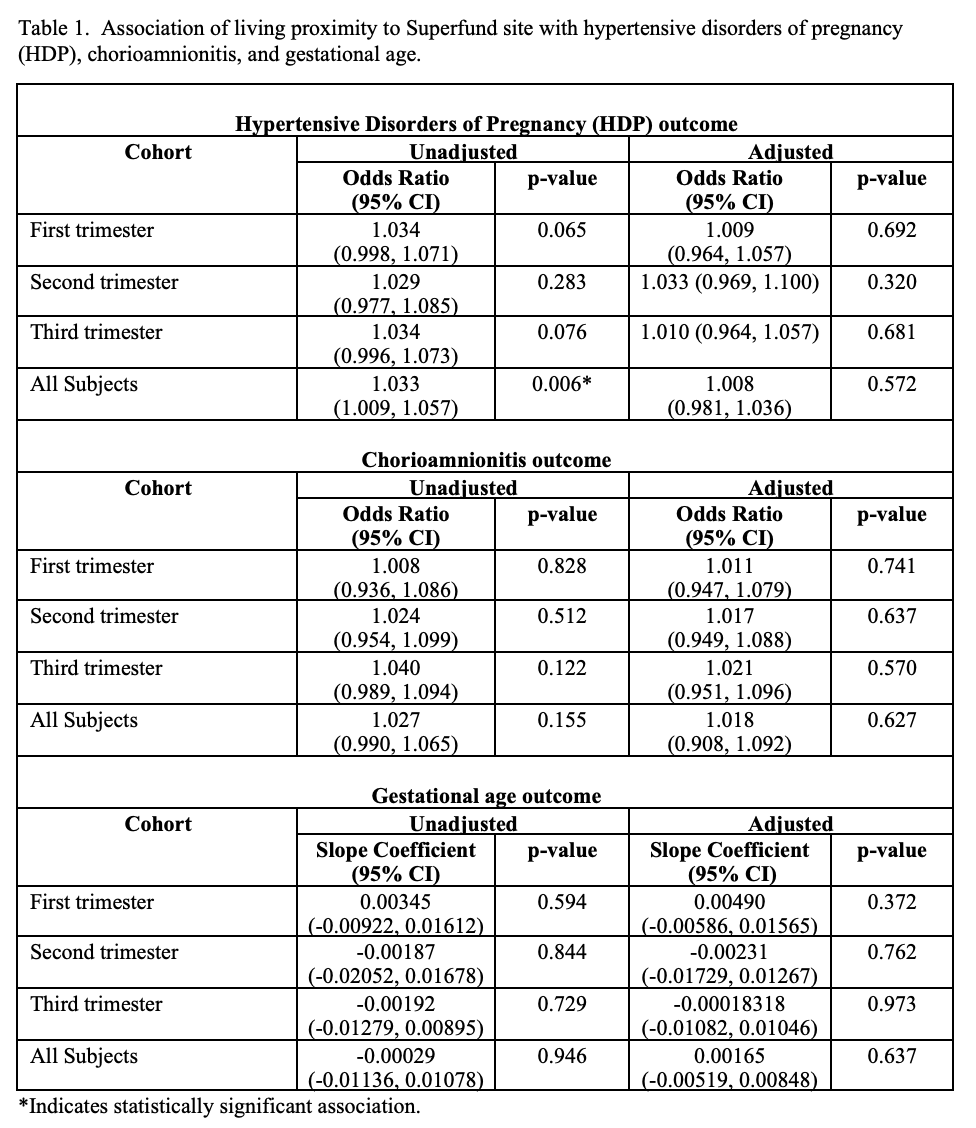Environmental Health
Environmental Health
615 - Superfund Sites and Hurricane Harvey: Evaluating the Association of Environmental Hazards and Disasters as a Potential Source of Inequity in Maternal/Neonatal Health Outcomes
Publication Number: 615.313

Danielle N. Gonzales, MD (she/her/hers)
Neonatology Fellow
Baylor College of Medicine
Pearland, Texas, United States
Presenting Author(s)
Background: Superfund sites are toxic waste sites disproportionately located in communities of color and low-income communities in Harris County, Texas, and surrounding counties. Racial/ethnic inequities exist in preterm birth, and toxins such as those found at Superfund sites have been implicated in preterm birth and pre-eclampsia/eclampsia. Flooding may facilitate contaminant spread and expose more people to them.
Objective:
This study evaluated the association between living proximity to Superfund sites and health outcomes (gestational age at birth, chorioamnionitis and hypertensive disorders of pregnancy (HDP) prior to and following Hurricane Harvey. HDP includes the diagnoses: gestational hypertension, preeclampsia, eclampsia, The hypothesis is those living closer to Superfund sites (by zip code centroid) are more likely to have babies with lower gestational age and the other health outcomes, particularly after Hurricane Harvey. This study uses regression analysis and geospatial techniques.
Design/Methods:
Data from two large delivery hospitals in Houston, Texas (Pavilion for Women Hospital and Ben Taub Hospital) were used for analysis. Data was evaluated in two time periods: pre-Hurricane Harvey (8/2016–11/2016) and post-Hurricane Harvey (8/2017-11/2017). All pregnant women during those time periods were selected and stratified into cohorts by trimester of pregnancy during the period. Linear and logistic regression were used and models were adjusted for covariates: maternal demographics, maternal medical and obstetric history, prenatal care, and infant characteristics. Geospatial analysis revealed hot spots of each health outcome during each period, which were compared to Superfund site location.
Results: Preliminary analysis for the pre-Harvey period used data from 5725 births. In the unadjusted model, living proximity to Superfund sites and HDP were significantly associated (OR 1.033, p=0.006) indicating that risk of HDP increased as distance from a Superfund site increased. This association became non-significant after adjusting for covariates (p=0.572). There were no significant associations between proximity to Superfund site and gestational age or chorioamnionitis in any model (Table 1). Data from the post-Harvey period and hot spot analysis are forthcoming.
Conclusion(s):
Superfund sites pose a health risk to the public, especially with flooding which has increased in frequency due to climate change. Forthcoming analysis on the post-Harvey period will provide vital information on how maternal/neonatal health outcomes change after an environmental disaster, especially in vulnerable populations.

